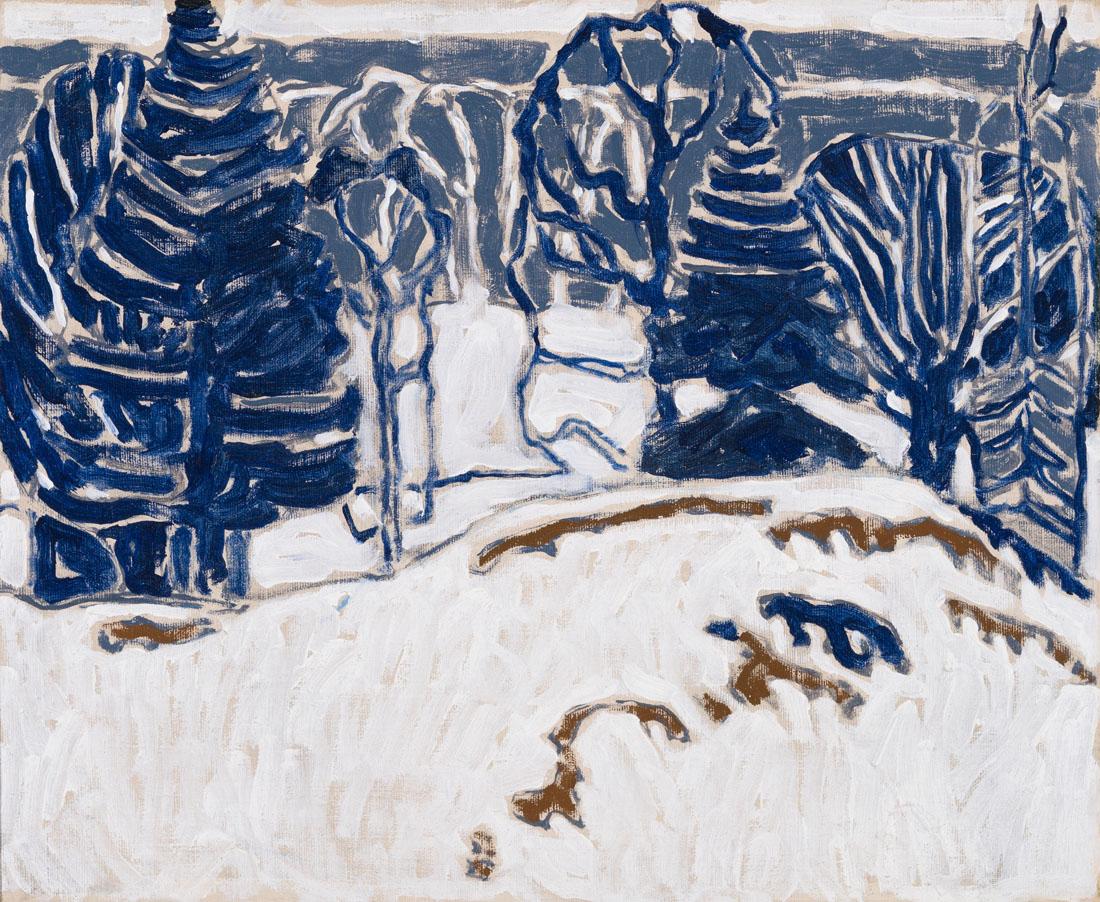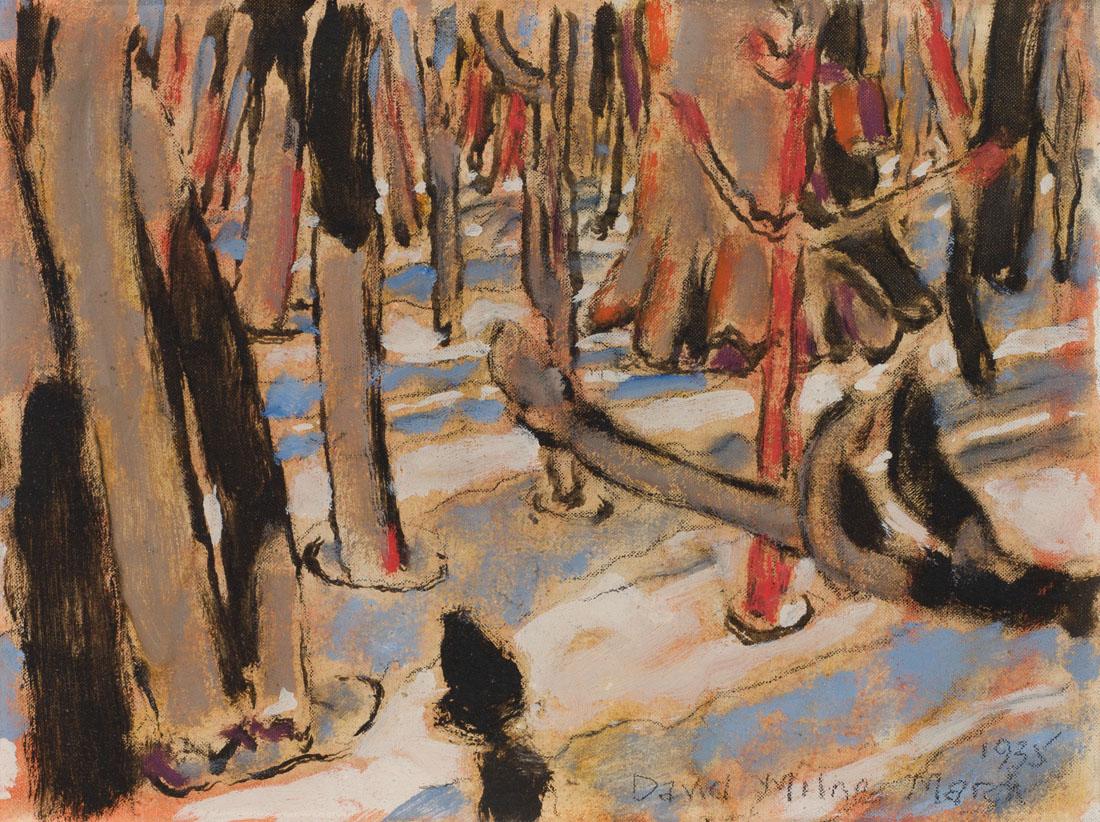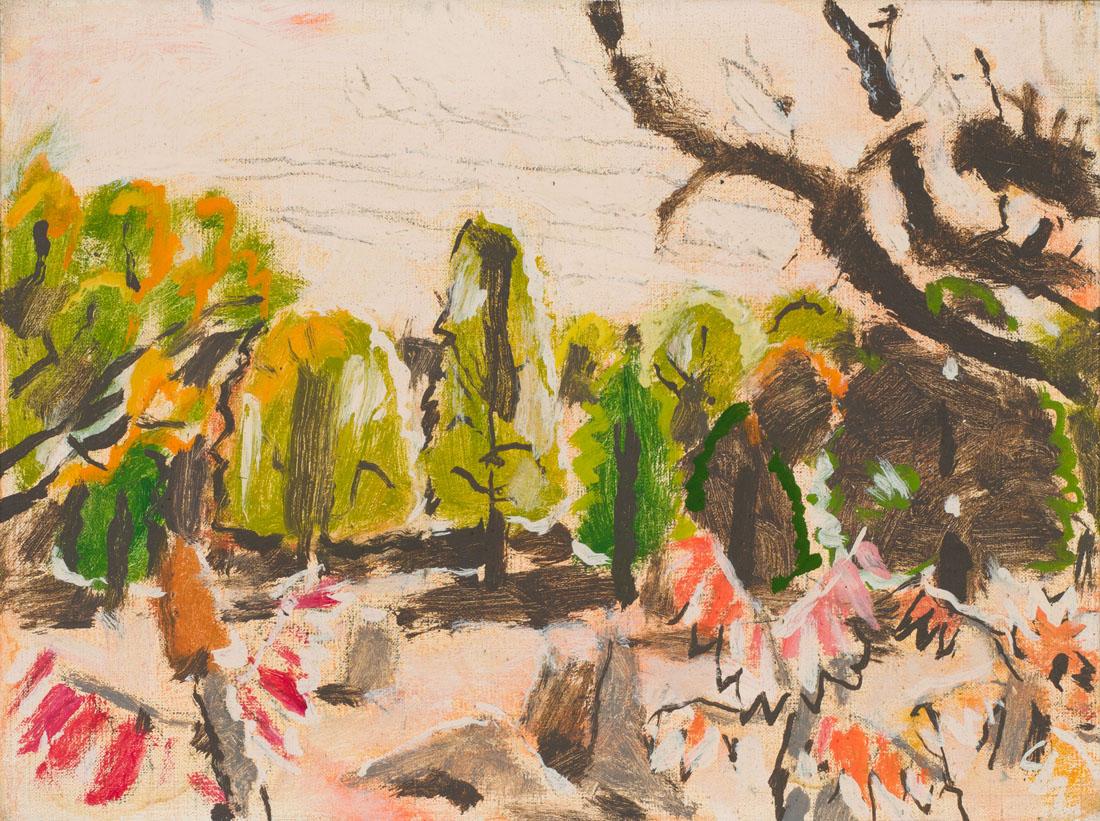Milne’s work is often described as being highly analytical and cold in appearance. Milne left behind a great deal of personal writing, which has allowed scholars to analyze his work with the artist’s own explanations in mind. In reflecting on his landscape paintings, Milne explained how he approached his subjects as theoretical challenges, translating charged spaces and sites into methodical mark-making exercises.
While training in New York, Milne became increasingly disinterested in representational subjects in his work. Throughout his career, he continued to work through the visual implications of moving away from illusionist scenes. He relied extensively on color as an independent means of expression—a feature that is evident in works like Gray Hill, where a limited palette is responsible for evoking a strong sense of place rather than simply suggesting the specific locale depicted. In 1918 and 1919, Milne traveled to France from England, where he was stationed for the last months of the First World War. He joined the Canadian Government’s War Records, a project aimed at documenting Canadian participation in the War. Milne produced over one hundred watercolors of sites in England and France while part of the initiative. The artist approached his battlefield subjects with a degree of emotional separation, allowing empty page space and sparse lines to evoke scorched earth and muddy debris.
Along with Gray Hill, Heffel is auctioning two more of Milne’s oil on canvas paintings. Snow in the Sugar Bush of 1935 is estimated to sell for between $30,000 and $50,000 CAD. This painting is much denser than Gray Hill, with pattern-like trees populating a snowy ground. All forms in the composition seem to impose on the viewer, with trees and the shadows they cast rendered in thick bands of shadow. Where his earlier works like Gray Hill make extensive use of open-seeming space, Snow in the Sugar Bush uses the interplay between horizontal and vertical lines to prevent the viewer from accessing the horizon line beyond the forest.































